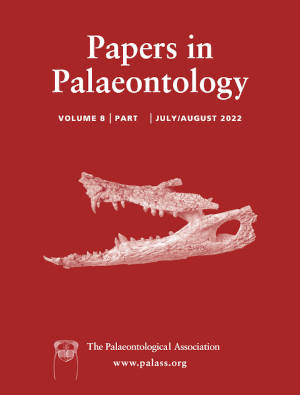Article: Multiple occurrences of pathologies suggesting a common and severe bone infection in a population of the Australian Pleistocene giant, Genyornis newtoni (Aves, Dromornithidae)
Publication: Papers in Palaeontology
Volume:
8
Part:
1
Publication Date:
2022
Article number:
e1415
Author(s):
Phoebe L. McInerney, Lee J. Arnold, Carey Burke, Aaron B. Camens, and Trevor H. Worthy
DOI:
10.1002/spp2.1415
Abstract
Abstract Vertebrate fossils showing pathological lesions are incredibly rare, and even more so is the identification of an ailment affecting multiple individuals in a population. However, the unique Lake Callabonna fossil deposit of South Australia has produced several such fossils from a single species of giant bird. Examination of the Lake Callabonna fossils of Genyornis newtoni, an extinct Pleistocene dromornithid, representing at least 34 individuals, has resulted in the identification of six osseous pathologies. These lesions are typical of the bone infection osteomyelitis, and affect a sternum, a tarsometatarsus and four phalanges across four individuals. The identification and description of osteomyelitis in these bones is the first of its kind for extinct galloanseres. Optically stimulated luminescence dating of host deposits shows that these animals were mired in lakebed sediments ranging from 54.2 to 50.4 kyr in age, probably becoming entrapped during a protracted drought phase previously identified as beginning at c. 48 ka and which would have resulted in the lakebed becoming exposed. Additional pathologies are recognized in phalanges of two other dromornithids, Dromornis stirtoni and Ilbandornis woodburnei, from the Miocene Alcoota deposit of the Northern Territory that are also interpreted as drought associated. It is possible that drought-driven stress and consequent immunosuppressive effects may have contributed to the high frequency of lesions observed in the sampled birds.
